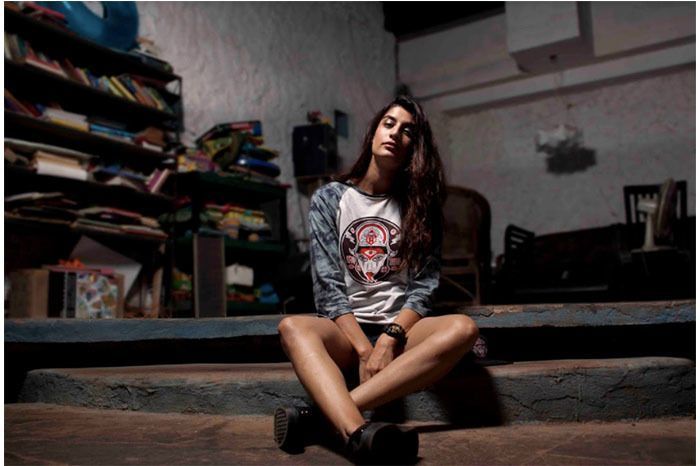
How Streetwear Took Over The Fashion World
Streetwear is a new phenomenon that has taken the fashion world by storm and has had a huge impact on its culture. A global phenomenon, streetwear spreads through fashion and infiltrates every area of pop culture. In the blink of an eye, trendy streetwear has had a big impact on creativity, distribution and marketing in the fashion world.
Streetwear has shown its African American and Hispanic roots and now this trendy style is slowly gaining popularity in the fashion industry. Now streetwear has spread across the sea to England and around the world to China and Japan. With a new evolution every day and the rise of luxury brands, the streetwear style has changed and incorporated new designs, fabrics and colors into its culture.
When the market was dominated by expensive luxury brands, streetwear became the opposite trend, already following the rules. The promotion has prompted the fashion industry and luxury brands such as Nike, Gucci and others to jump into streetwear quickly. Streetwear has been given its own platform to grow and prosper, allowing them to partner with luxury brands.
Streetwear has become a luxury as designers, fans and celebrities have legitimized their culture in the cash cow industry. With its freshness, authenticity, practicality and deep culture, streetwear has evolved, found its place in luxury fashion and conquered it. The move set the stage for the cross-pollination of streetwear and luxury fashion into the mainstream.
Streetwear has given the fashion mainstream something it didn’t know it had. Streetwear has done what no other fashion industry has done: it has burst the bubble of haute couture, “luxury goods”, renaming haute couture into something different and completely unexpected. Streetwear has greatly influenced and rebranded high fashion brands, encouraging them to interact with new audiences and acquire brand identities that are very different from what they used to be.
Streetwear brands no longer eschew the latest high fashion trends and reprise popular themes. It’s no surprise that fashion brands have entered the streetwear trend in recent years. The second reason for the interest of established brands is that streetwear has subverted fashion trends.
Many major fashion houses have tried their hand at creating streetwear and fashion styles to keep up with the high demand for what the world needs. Incorporating streetwear has now become an important practice for big brands such as traditional luxury homes and mall retail brands. It wasn’t easy, but big brands like Louis Vuitton gave streetwear a place in the fashion industry.
The lines between haute couture and streetwear are blurring as more brands launch collaborative collections with major sportswear brands. As the new decade begins, streetwear has become one of the fastest-growing and most powerful trends in fashion.
At first glance, the definition of “streetwear” seems to be very simple. The fashion industry defines streetwear as trendy casual wear worn by followers of popular culture. Streetwear is a casual style of clothing that is based on comfortable and casual pieces of clothing such as T-shirts, sneakers, sweatshirts, jeans, baseball caps and more. Street fashion includes street hoodies, joggers, sneakers, sweatshirts, streetwear shorts and so on. The streetwear industry focuses on the culture of the Hypebeast.

Streetwear is fashion that challenges the traditional dress codes of yesteryear, replacing them with hip hop street style. Streetwear drew inspiration from various scenes in the fashion world, such as hip-hop fashion from New York and surf-skateboarding culture from California. Following its popularity in California, streetwear spread to the West Coast, where it became a mainstay of New York’s skate and hip-hop circles.
Streetwear originated as an antidote to broader fashion trends originating from countercultures such as skate, surf and hip hop. With the spread of street fashion, men have become more serious about fashion and clothing, and therefore today we are seeing changes. Then mainstream fashion reemerged (thanks to leisure sports) and streetwear began to be absorbed into fashion trend cycles.
High fashion brands recognized the power of celebrities, and the hip-hop scene was the counterculture that streetwear styles resonated with. Celebrities have not only endorsed streetwear on social media as a lifestyle, fashion and cultural trend, but they have also flaunted their own streetwear looks and even gone even further by creating their own streetwear brands. Many, especially in America, wore streetwear as a representation of their origins and culture.
Streetwear has become popular not only among surfers, but also among the punk rock scene. Now some fashion insiders are arguing that the streetwear aesthetic — graphic T-shirts, oversized hoodies, sneakers and tech outerwear — that has dominated the runways and high street windows in recent years has passed its peak. We are already seeing changes in the fashion industry: what used to be considered unsuitable for fashion shows is gradually becoming the most important, and we are talking about streetwear here.
Casual fashion has led to the adoption of streetwear and streetwear by luxury fashion brands including Dior, Givenchy, Balenciaga and many more. Brands like Supreme and Stussy pioneered designers like Vigil Abloh and Raf Simmons who created their own take on streetwear. When designers like Kanye West and Virgil Abloh created their streetwear collections, they quickly grew to capture the attention of luxury brands and fashion lovers alike.
Streetwear has forged an intimate and almost iconic relationship with its consumers and perfected the direct-to-consumer model the fashion industry has been desperately trying to decipher. The world of fashion has redefined exclusivity thanks to drop culture — mostly streetwear. Kept gives brands like Off-White a clear advantage over their peers, as they are recognized as streetwear pioneers.



